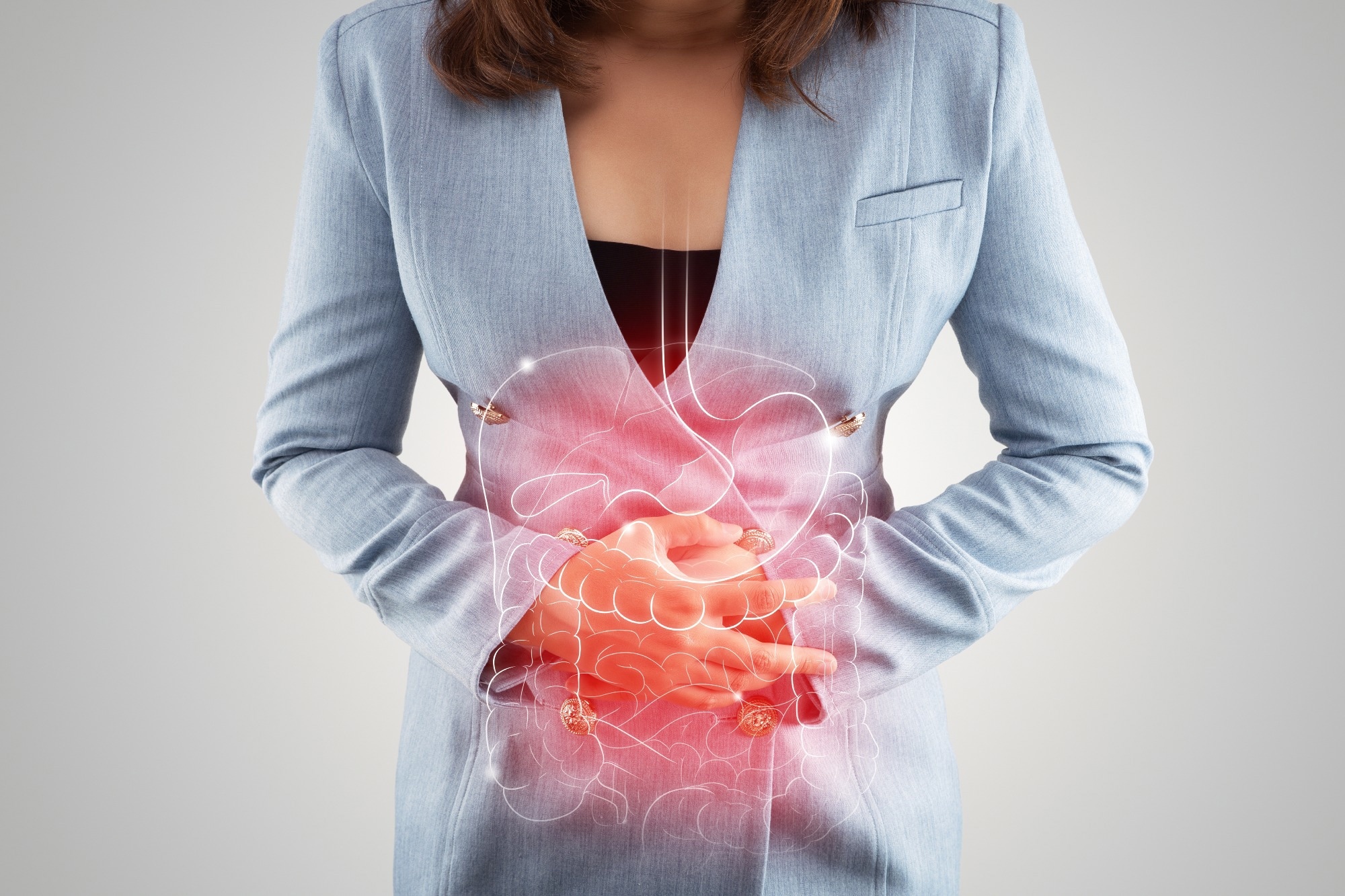Tests for Indigestion (Dyspepsia)

Introduction
Medical history
Physical examination
Clinical tests
References
Further reading
Indigestion, also known as dyspepsia, is described as recurrent or chronic pain in the upper abdomen, accompanied by difficulty digesting food. It is commonly caused by stomach ulcers or gastroesophageal reflux. It presents symptoms such as nausea, pain, or burning in the upper abdomen, discomfort after eating, and early satiety during eating.
 Image Credit: Tero Vesalainen/Shutterstock
Image Credit: Tero Vesalainen/Shutterstock
Medical history
Dyspepsia can be diagnosed with a thorough investigation of medical history and by performing several physical examinations, in particular through endoscopy. Helicobacter pylori (H. pylori) infection within the stomach and upper digestive tract has also been implicated in causing chronic dyspepsia, and thus samples may be collected and tested for the presence of this bacterium. The major methods of diagnosing dyspepsia will be discussed in more detail below.
Obtaining accurate medical history can be extremely important when diagnosing dyspepsia, as various medications and lifestyle choices can impact the probability and cause of dyspepsia developing. For example, spicy and fatty foods can cause irritation to the stomach lining and induce, usually temporary, indigestion. Smoking and drinking alcohol can also increase the likelihood of dyspepsia developing by weakening the esophageal sphincter and causing stomach acid acidification. Indigestion resulting from these external sources is considered “functional indigestion,” while dyspepsia resulting from bodily dysfunction, such as reflux disease (GERD), peptic ulcers, or even chronic stress, is known as “organic indigestion.”
Physical examination
Physical examination for signs of persistent dyspepsia can be carried out, which may also indicate the cause of indigestion. For example, dental erosion is indicative of acid reflux. At the same time, low blood pressure, tachycardia, and blood in the stool may signify gastrointestinal bleeding due to GERD or peptic ulcers. Suppose physical examinations indicate that the patient is suffering from chronic dyspepsia. In that case, an endoscopy is usually performed to image the interior of the gastrointestinal tract directly, often also supported by other diagnostic techniques such as computerized tomography to identify regions of inflammation.
Upper GI endoscopy is utilized to diagnose a variety of diseases and conditions that may be causing indigestion, including gastritis, peptic ulcer, and cancer. Generally, endoscopy is recommended for people above 55 years of age, and those suffering from indigestion who are also experiencing trouble swallowing, GI tract bleeding, frequent vomiting, weight loss, or with a family history of cancer. During endoscopy, a tube fitted with a camera, or in more modern practice, a small camera-fitted capsule, is passed along the GI tract to allow physicians to identify any anomalies in the structure or lining. An upper GI tract biopsy is sometimes also done during endoscopy, in which a small piece of tissue from the inner lining of the abdomen or stomach is removed and tested for digestive tract diseases, including H. pylori infection. Depending on the person's condition, an endoscopy procedure generally takes 15–20 minutes.
 Image Credit: Emily frost/Shutterstock
Image Credit: Emily frost/Shutterstock
Clinical tests
Antibodies eBook

If biopsy samples are collected, bacteria on the sample are firstly separated from the tissue and cultured, with H. pylori nucleic acids amplified using RT-PCR and identified by assay. A number of less invasive tests for H. pylori infection are also available, such as the urea breath test, serological test (blood test), and stool test.
The urea breath test involves the patient swallowing a capsule or liquid containing carbon-13 or carbon-14 labeled urea. H. pylori bacteria are able to metabolize urea using urease enzymes, which generate carbon dioxide as a product. Carbon dioxide exhaled in the breath containing C13 or C14 isotopes must therefore originate from the metabolism of labeled urea in the stomach by H. pylori bacteria, with the proportion of carbon dioxide above baseline levels indicative of infection severity. Patients are advised not to eat or drink for several hours prior to the test in order to prevent interference, and as the test depends on the presence of bacteria can be influenced by the consumption of medications such as antibiotics.
The presence of H. pylori bacteria can also be confirmed in the stool, usually by enzyme immunoassay (EIA) or immunochromatography (ICA). A variety of specific EIA techniques can be used to identify significant H. pylori biomarkers, generally indicating the presence of particular antigens by colorimetric or fluorimetric methods. ICA, otherwise known as lateral flow test, operates in a similar method as EIA, where complimentary molecules to known H. pylori biomarkers are placed on a strip and exposed to the sample, with color change upon successful bonding and then indicating infection. Monoclonal or polyclonal antibodies to H. pylori antigens are usually employed, and the pre-prepared nature of lateral flow tests makes them extremely convenient to perform.
The immune response to H. pylori infection can also be detected in the blood by elevated IgG and IgA antibodies, which can be detected by various serological tests, largely enzyme immunoassay. The specificity of a patient’s serum antibodies towards H. pylori antigens is strong evidence of past and ongoing infection.
References:
- Evaluation and Management of Dyspepsia, http://www.aafp.org/afp/1999/1015/p1773.html
- Health Service Executive, https://www.hse.ie/eng/health/az/D/Dyspepsia/Diagnosing-indigestion.html
- Kids Health, Indigestion, http://kidshealth.org/en/kids/indigestion.html#
- Test and treat for dyspepsia—but which test? https://www.ncbi.nlm.nih.gov/pmc/articles/PMC544414/
- NIH, Diagnosis of Indigestion, https://www.niddk.nih.gov/health-information/digestive-diseases/indigestion-dyspepsia/diagnosis
- Colorado Department of Public Health, Serology Laboratory, https://www.colorado.gov/pacific/cdphe/serology-laboratory
- Diagnosis of Helicobacter pylori: Changes towards the Future, http://www.mdpi.com/2079-9721/3/3/122/html
Further Reading
- All Indigestion Content
- Indigestion – What is Indigestion?
- Indigestion Symptoms
- Managing Indigestion (Dyspepsia)
- Lifestyle Changes for Indigestion (Dyspepsia)
Last Updated: Feb 2, 2023

Written by
Michael Greenwood
Michael graduated from Manchester Metropolitan University with a B.Sc. in Chemistry in 2014, where he majored in organic, inorganic, physical and analytical chemistry. He is currently completing a Ph.D. on the design and production of gold nanoparticles able to act as multimodal anticancer agents, being both drug delivery platforms and radiation dose enhancers.
Source: Read Full Article




